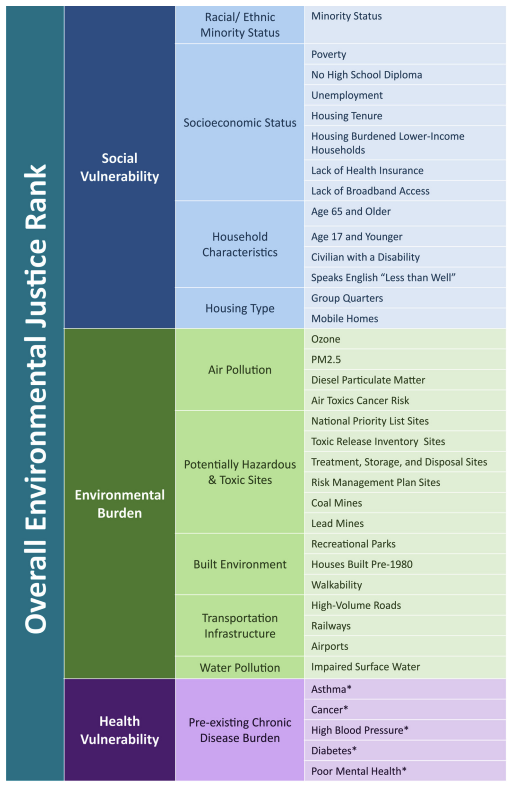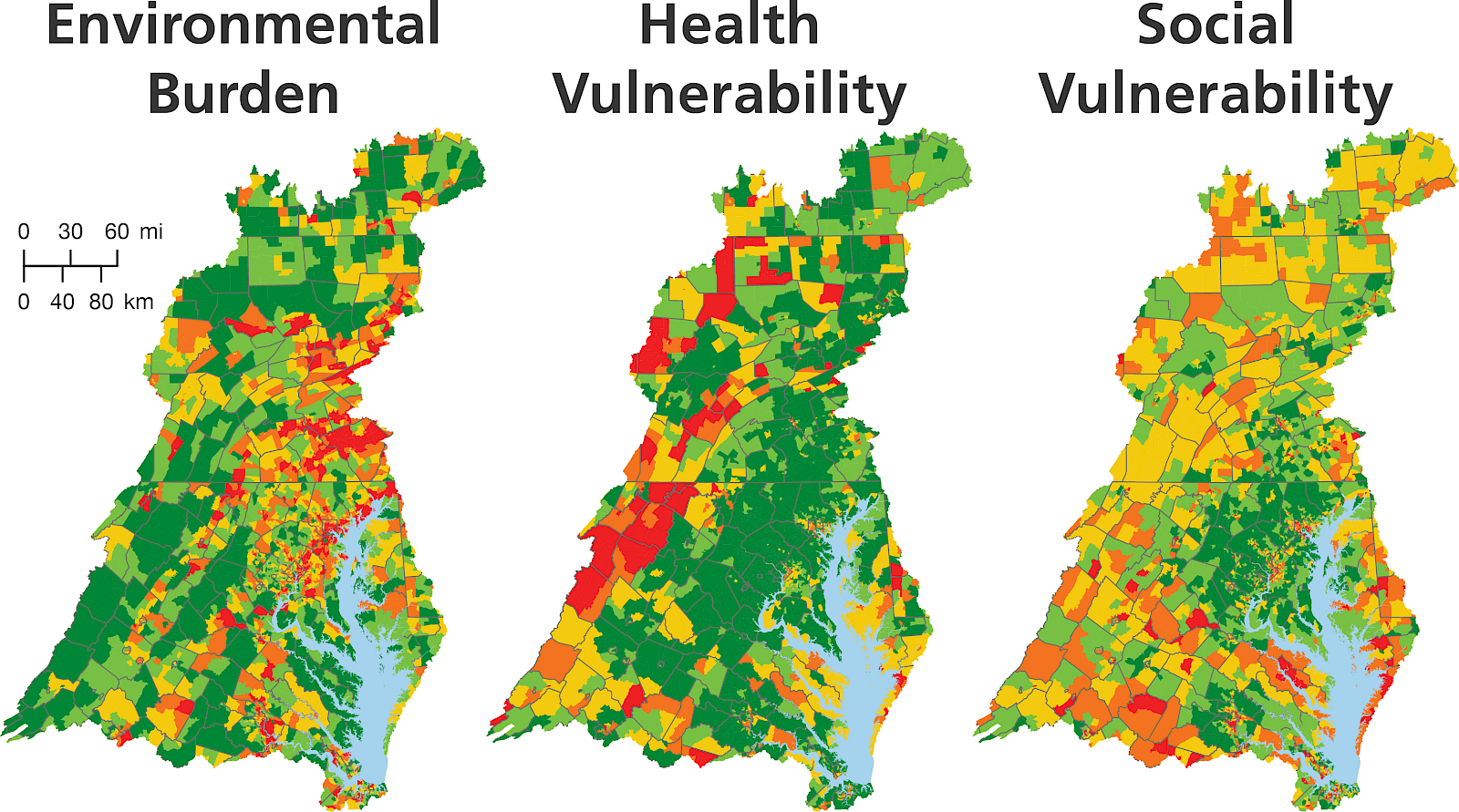New environmental justice index shows strong disparities

Creating a healthy and equitable society in the Chesapeake Bay watershed requires equal sharing of benefits of resources, balance in the distribution of socio-environmental burdens, and equal opportunity to participate in decision-making. Environmental Justice is a priority issue that is important to highlight in the report card. This year, the Centers for Disease Control and Prevention's (CDC) Environmental Justice Index (EJI) was used to map and characterize the cumulative impacts and patterns of environmental injustice across the Chesapeake Bay Watershed. The index, as shown in the table, is made up of three modules—social vulnerability, environmental burden, and health vulnerability.

The map above shows the environmental justice score for each census tract within the Chesapeake Bay watershed, while the maps below show the scores for each of the three modules. They reveal strong disparities in different areas of the watershed. Cities and rural areas tend to experience higher relative impacts and more suburban areas tend to experience lower relative impacts. Environmental Justice considers aspects of life such as health, economy, and social justice, as well as environmental quality. Therefore, addressing environmental justice is crucial for the long-term health and sustainability of the Chesapeake Bay watershed.

